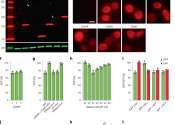Precise transcript targeting by CRISPR-Csm complexes
Mammalian cells are inherently complex due to subcellular compartments, thereby making the process of robust transcript targeting of nucleic acids somewhat challenging in the molecular biology lab. In a recent report now ...









